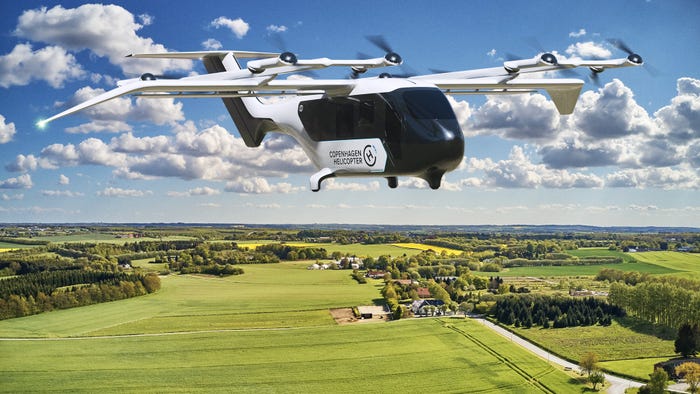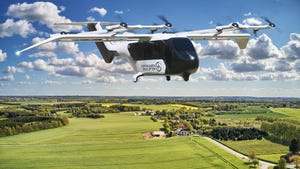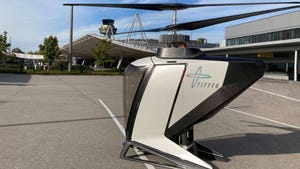Smart Factory Technology Upgrades: 5G, Cybersecurity DominateSmart Factory Technology Upgrades: 5G, Cybersecurity Dominate
Forrester's An expert says that smart factory technology investments while focusing on solving tangible problems.

Enterprises contemplating a smart factory site must consider which upgrades will maximize value from investments, with vendors needing to address cybersecurity, connectivity, and artificial reality, among other technologies.
Vendors need to “augmenting the engineer” through any smart factory technology upgrades – with humans needing to be at the forefront of any upgrade plans
As smart factories look to upgrade their sites following the economic upheaval that was 2020, manufacturers need to step up to the plate and demonstrate some innovation as limited factory floor access hampers prospective upgrade plans.
Paul Miller, Forrester principal analyst, said that manufacturers are being more thoughtful when it comes to maximizing value on any potential upgrade investments and stressed the need to focus on “augmenting the engineer” in any potential upgrade plans.
Maximizing Value from Smart Technology Upgrades in Brownfield Sites
IT pros and executives tend to focus on greenfield deployments, Miller imparted the reality that 80% to 90% of assets in typical manufacturing environments are brownfield, and that with some being up to 30 years old, “There’s a requirement to connect those as well.”
Miller suggested that smart manufacturers have focused on where and what to invest in during COVID times. He said, “it’s not necessarily putting a sensor onto every machine or every part of every machine but working out where to put those limited sensors to give you the maximum value.”
Miller cited New York-based Augury,, which offers retrofitted sensors that benefit brownfield manufacturing sites that need to upgrade, adding that such sensors can measure vibrations, temperature, and noise.
“[Vendors are] working out where to put those to get the maximum value to allow you to start upgrading and modernizing those brownfield assets without stripping everything out and starting again with a greenfield deployment,” he added.
Successful Industry 4.0 Pre-COVID Pilots Accelerated
As the enormous economic downturn caused many vendors to reevaluate their plans last year, those with plans to upgrade their smart factories have had to either shelve or shove their plans further down the timeline.
Miller noted that investment will be ” increased far more than was originally on the roadmap.”
Pilots that were previously planned are now speeding up, he said, with pre-COVID-19 time frames not likely to return any time soon.
“If a pilot was poorly defined, the pilot has likely been stopped and will probably never come back. If it was tightly defined and solved a problem, all those timetables have been accelerated,” Miller said.
As a result of those fast-moving pilot implementations, Miller said that overall investment is “about the same as it was predicted to be, but it’s much more focussed on solving real, tangible problems.”
Key Smart Factory Technology Upgrade
So, which upgrades will smart manufacturers undertake?
Connecting assets is a large priority Miller said. Most devices shipped by Bosch and Siemens are connectable and IoT capable.
He also said that while 5G connectivity “is part of that conversation absolutely,” it’s not the only focus, with fiber, Wi-Fi, Bluetooth, and traditional wired networking inside factories also being the answer to some user’s requirements.”Don’t assume you have to have 5G,” Miller added. There are indeed, many connectivity options.
Miller said that hybrid systems, with cloud-based processing at scale and edge-based processing where the device resides has become a favored architecture: It’s dubbed “edge cloud architecture.”
“Vendors need the cloud for the scale and for looking across your ‘X’ number of plants around the world to understand what those patterns look like, but you then need edge for some of the latency-intensive use cases.”
Cybersecurity is another domain in which smart factory manufacturers have been “grappling.”
Miller said that vendors now have to understand cybersecurity risks to secure assets while getting the value needed – without opening up the company to significant new risks.
Augmenting Human Work
In terms of balancing the need to undertake vital upgrades with limited factory floor access, Miller said manufacturers use artificial reality (AR) to great effect.
AR allows a field service engineer to help repair or install a user’s machine without requiring the engineer to come on-site, Miller said. He added that it can even allow an engineer to help smart factory employees to service an asset themselves while using AR to offer both advice and guidance throughout a potential repair or installation.
A second trend is pragmatism about
“Post-pandemic, most of that has stopped, with more interest placed in discrete problems and solving them, like the aforementioned remote assistance use case — IoT may be part of the answer there.”
Miller noted a “big shift” in using automation and Industry 4.0 technologies to understand how they fit into human workflows.
He stressed the need to “augmenting the engineer” in order to make smart factory employees’ jobs easier.
“Remember these workers know a lot and how do you bring that knowledge and that expertise out while using technology to help rather than dumb down work.
“The importance of the human is one that we’re going to keep hammering on this year because a lot of the smart manufacturing industry 4.0 conversation forgot the people. It was all ‘look at the robots and shiny machines’ while people were in the background. That hasn’t helped anyone”, Miller said.
He warned that such conversations have “terrified” some workers about the prospects of robotics to replace human work, which he added “isn’t true.”
About the Author
You May Also Like
.jpg?width=100&auto=webp&quality=80&disable=upscale)
.jpg?width=400&auto=webp&quality=80&disable=upscale)
.jpg?width=700&auto=webp&quality=80&disable=upscale)





